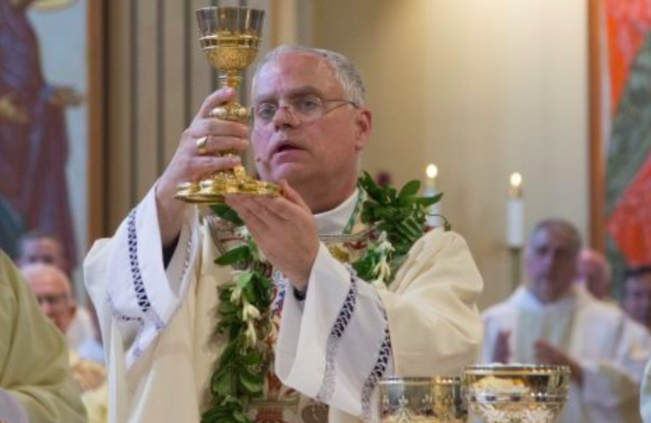BUT SPECIAL SESSION COULD DONE BE CHEAP, IF WORK IS DONE IN FOUR DAYS
Editor’s note: This has been a fast-moving story. The update is at this link, describing the legislative leadership’s decision to decline a special session in Wasilla.
$1.3 million for 60 legislators spending 30 days in Wasilla.
That’s what the Legislative Affairs Agency estimates a 30-day special session will cost, and it compares well enough with previous special sessions, which cost as much as $1.1 million for 30 days. Gov. Michael Dunleavy has called for the special session to convene on July 8 somewhere in Wasilla.
Although the cost does pencil out to $6,666 more per day to have the special session meet at Wasilla Middle School than, say, Juneau, the tab could be a lot smaller if legislators finish the one thing the governor has asked them to do: Fund the Permanent Fund dividend. And that could be done in less than a week.
Many legislators would be able to drive home every night. Anchorage is only 40 minutes away. And for most of special session, only Finance Committee members and leadership would be needed on most days.
The House Republican Minority — 15 of them — are sticking together to keep the special session in Wasilla. They like the chances of the Permanent Fund dividend being fully funded if meetings are held near where people really care about this issue.
Even while the House and Senate Majority are searching for one last vote that would move the session away from the fastest growing area of the state, the Wasilla delegation has thrown out the welcome mat. In a letter to fellow legislators, they wrote today:
“On behalf of the residents of the City of Wasilla and the over 100,000 residents of the entire Mat-Su Borough, it is our pleasure to host the upcoming Special Session in Wasilla. Celebrated as the Valley’s major business center, Wasilla’s diverse businesses will no doubt be able to offer the legislature numerous choices in hotels and lodging, restaurants, transportation, audio/visual assistance, medical services and centralized LEO/EMS services.
“In touring Wasilla Middle School, we saw firsthand that it is ready to accommodate all meetings necessary to conduct state business. In reference to recent discussions about the additional $200,000 cost compared to meeting in Juneau, a Wasilla businessman said it best: “This whole question is ridiculous.The cost overage is a bogeyman, in a state where $200,000 is 3 ten-thousandths of one percent of the state budget.That’s like objecting to spending one dollar and eighty cents out of a household income of sixty grand.”
“Because of Wasilla’s centralized location, many Alaska residents from numerous communities statewide will be able to attend much more affordably than if the special session were held in Juneau. Messages received from across the state clearly indicate that many, many Alaskans are excited to be involved and for their voices to be heard.
“Although a number of Alaskans are frustrated with the challenges our state faces and discussions regarding the PFD, it’s important to point out that the Valley has a proud history of civil and respectful public gatherings, including large legislative town halls.
“Should there be a chance to take a break during the special session, the Mat-Su is the crown jewel of recreational offerings: kayaking at Wasilla Lake, hiking at Hatcher Pass, bike rides along our miles of bike paths or at Government Peak Recreational Area, all within ten miles of Wasilla Middle School. Additional and nearby fishing, boating, and other summertime opportunities are vastly available whether north on the Parks Highway or to the east in the Palmer or Sutton area.”
Not to mention the great restaurant options all over the Mat-Su Valley. Even Rep. Laddie Shaw could find a mountain to climb and para-sail off of.
The Legislative Affairs Agency again expressed concerns about security at Wasilla Middle School, but a group of veterans gathered at a coffee shop in Wasilla this morning suggested that the Palmer Correctional Center is also available for the security-minded legislator.
“They’d be safe there,” one of them offered in jest. “It would be a great location, and the camera system needs to be set up anyway for the influx of criminals that are going to be sent there — as soon as [legislators] get their work done.”
But when it comes to safety, the City of Wasilla has a lot of police per capita — more than Anchorage or Juneau.
Gov. Michael Dunleavy has placed just one item on the special session agenda: Funding for the annual Permanent Fund dividend. That item was separated from the operating budget by the Legislature this year and, with checks expected to go out in September, is still unfunded.
But a special session on this topic could take as little as four days — two days of work in the House, and two in the Senate.
“A bunch of us out here in Wasilla think it’s worth getting legislators together in a place where people are unequivocal on the Permanent Fund dividend,” one old-timer said. Wasilla would definitely be that place.






